26-30 April 2018
Leaving Burgundy (Beaune), we head to the Province of Alsace, with plenty of scenery and sights along the way - yellow mustard fields and yellow postal service bicycles.
We arrive in Colmar. The city is renowned for its well-preserved old town, its numerous architectural landmarks, and its museums, among which is the Unterlinden Museum, which houses the Isenheim Altarpiece.
The Isenheim Altarpiece was sculpted and painted by, respectively, the Germans Nikolaus of Haguenau and Matthias Grünewald from 1512–1516.
Our hotel for a few evenings, with our trusty rental standing by.
Turckheim, located in Alsace, is a village known for its Gewürztraminer wines, traditional Alsatian cuisine, and stunning surrounding scenery. Turckheim is probably most well known for its surrounding medieval wall. The wall has three doors, or portes: The Munster Door, which opens into the Munster Valley; The Door of the Brand, which begins the Route des Vins; and the Door of France, through which lies the railway station and the roads to Colmar.
Kaysersberg
The high fortress that dominates the city serves as a reminder of both its strategic importance and its warlike past. Together with the rest of Alsace-Lorraine, Kaysersberg was annexed by Germany during a period of 48 years, between the Franco-Prussian War and the First World War.
Kaysersberg is one of the finest wine-growing areas in Alsace. The first vines were brought here in the 16th century from Hungary, and wine production is still an important aspect of the town's economy today. Wine produced from the pinot gris variety is a local specialty.
The high fortress that dominates the city serves as a reminder of both its strategic importance and its warlike past. Together with the rest of Alsace-Lorraine, Kaysersberg was annexed by Germany during a period of 48 years, between the Franco-Prussian War and the First World War.
Kaysersberg is one of the finest wine-growing areas in Alsace. The first vines were brought here in the 16th century from Hungary, and wine production is still an important aspect of the town's economy today. Wine produced from the pinot gris variety is a local specialty.
Bergheim is a completely fortified town and has an ancient and remarkable church, as well as magnificent towers and walls. The entire population was wiped out by two wars and the plague in the 17th-18th centuries. To replace the population, thousands of people from other countries were invited to immigrate to Bergheim. The majority of people who immigrated at that times were Swiss, German, Hungarian, Austrian, or Romanian.
The city runs on tourism and the grape vines that surround the city and the region.
The city runs on tourism and the grape vines that surround the city and the region.
Riquewihr
A popular tourist attraction for its historical architecture, Riquewihr is also known for the Riesling and other great wines produced in the village. Riquewihr looks today more or less as it did in the 16th century. It is officially one of the most beautiful villages in France, or Les plus beaux villages de France. It is located on the Route des Vins (The Wines Road), close to Colmar.
A popular tourist attraction for its historical architecture, Riquewihr is also known for the Riesling and other great wines produced in the village. Riquewihr looks today more or less as it did in the 16th century. It is officially one of the most beautiful villages in France, or Les plus beaux villages de France. It is located on the Route des Vins (The Wines Road), close to Colmar.
Relaxed Riquewihr hound and unimpressed Riquewihr feline.
"Keyhole" picture framed medieval homes - and that cat, actually it seems to be pondering what wine to purchase for this evening's vittles.
Time for Alsacian wine and Gerri is inspired to create impressionist's images with it.

The first tiny home in recorded history ???
From the time well before automobiles - very narrow town streets.
"Two- dimensional tree" ; purple half-timbered home, now featuring an automobile garage.
Time enough for just one more church...
Back in Colmar, departing from our neat little hotel, and the best parking spot we've had in France.
Driving to Verdun, we briefly stop to visit the Montsec American Monument built here during the 1930s by the American Battle Monuments Commission. The monument, dedicated in 1937, commemorates the American forces who fought in the Battle of Saint-Mihiel in World War I.
Our last French baguette - from a vending machine of all things. And Tim had to try a McDonald's offering made famous by the movie "Pulp Fiction". "No man, they got the metric system. They wouldn't know what the heck a Quarter Pounder is. They call it a Royale with cheese."
And finally our last scheduled tour spot in France - Verdun. Verdun was the site of a major battle, and the longest-lasting, of the First World War. One of the costliest battles in military history, Verdun exemplified the policy of a "war of attrition" pursued by both sides, which led to an enormous loss of life.
Actual trenches still hanging on from the Great War.
Monument to the Dying Lion. Gerri sitting atop a fortification.
Verdun Memorial Museum - exhibits on the 300 days of the Battle of Verdun.
Douaumont Ossuary - tomb of countless unknown French and German soldiers whose last homes were the muddy trenches of Verdun. To the right, the remains of the village of Fluery - 30 villages were caught in the hell of Verdun and destroyed, nine, one of them Fluery, were never rebuilt.
Our tour of France is complete - we spend a couple of evenings relaxing at an ultra-modern hotel adjacent to Paris's Charles de Gaulle Airport. We are left with several bottles of wine, champagne, and beer which we cannot take on the airplane - so we drink it, even having to pour the last of the champagne to drink in the terminal.





















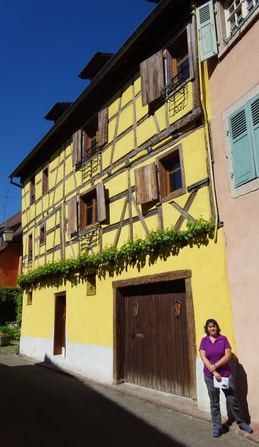














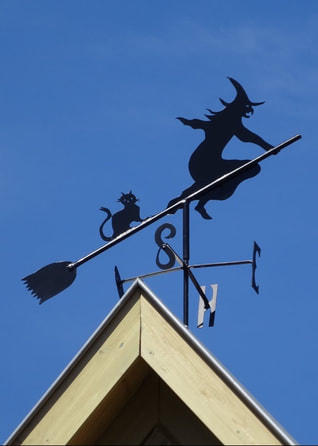








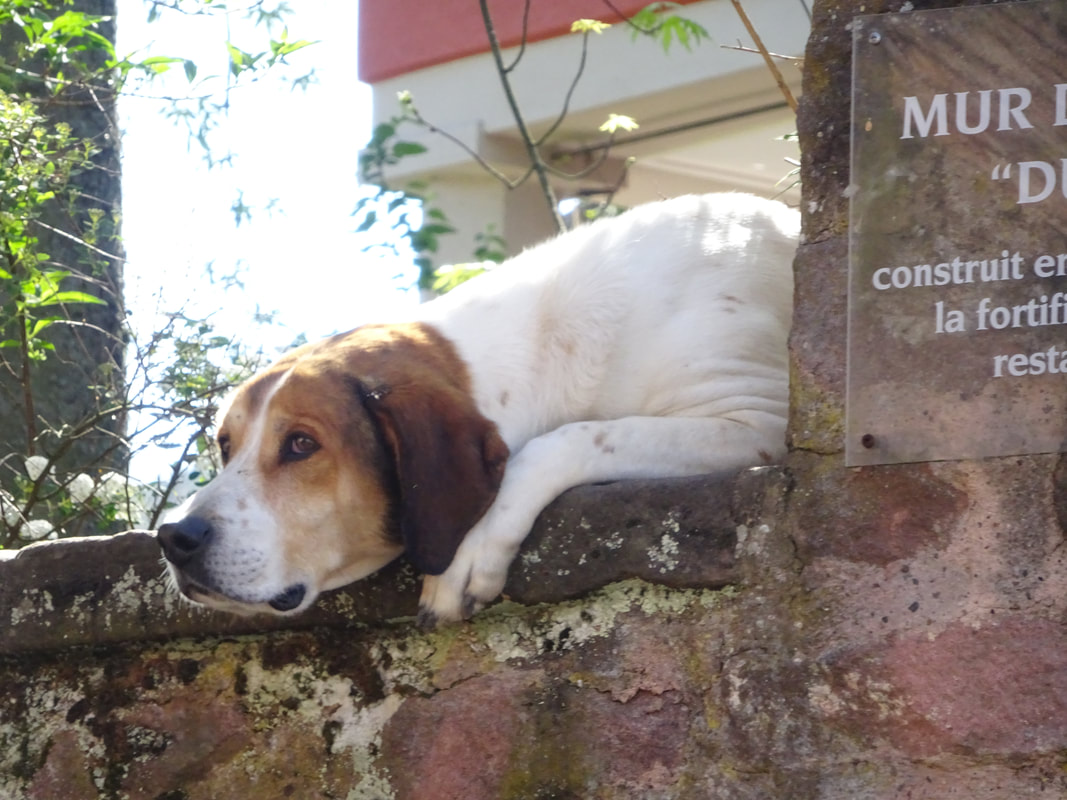



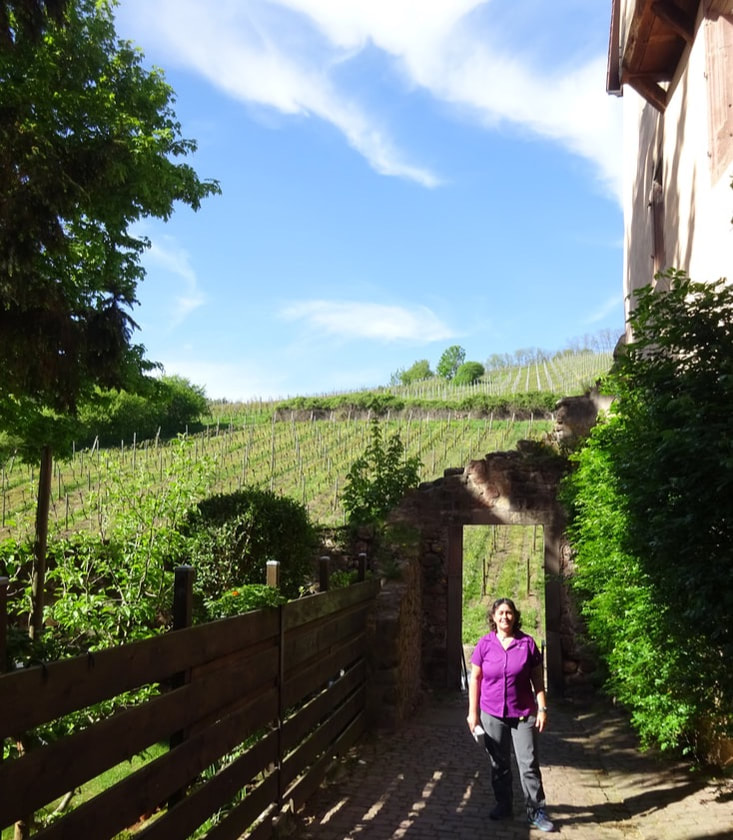

















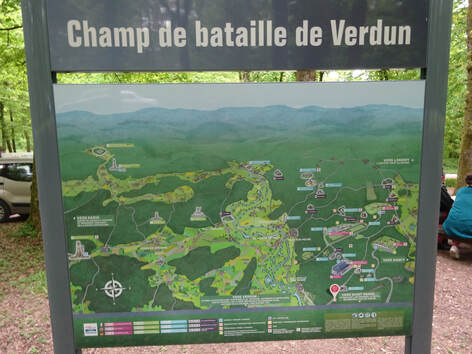

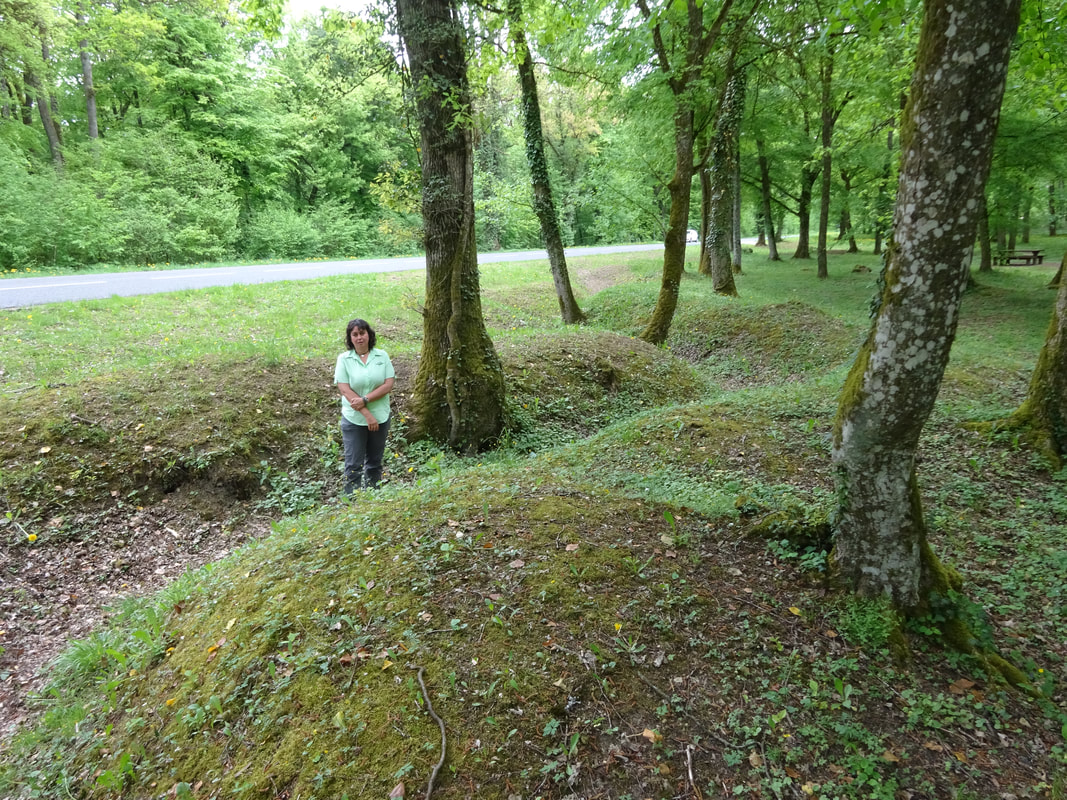






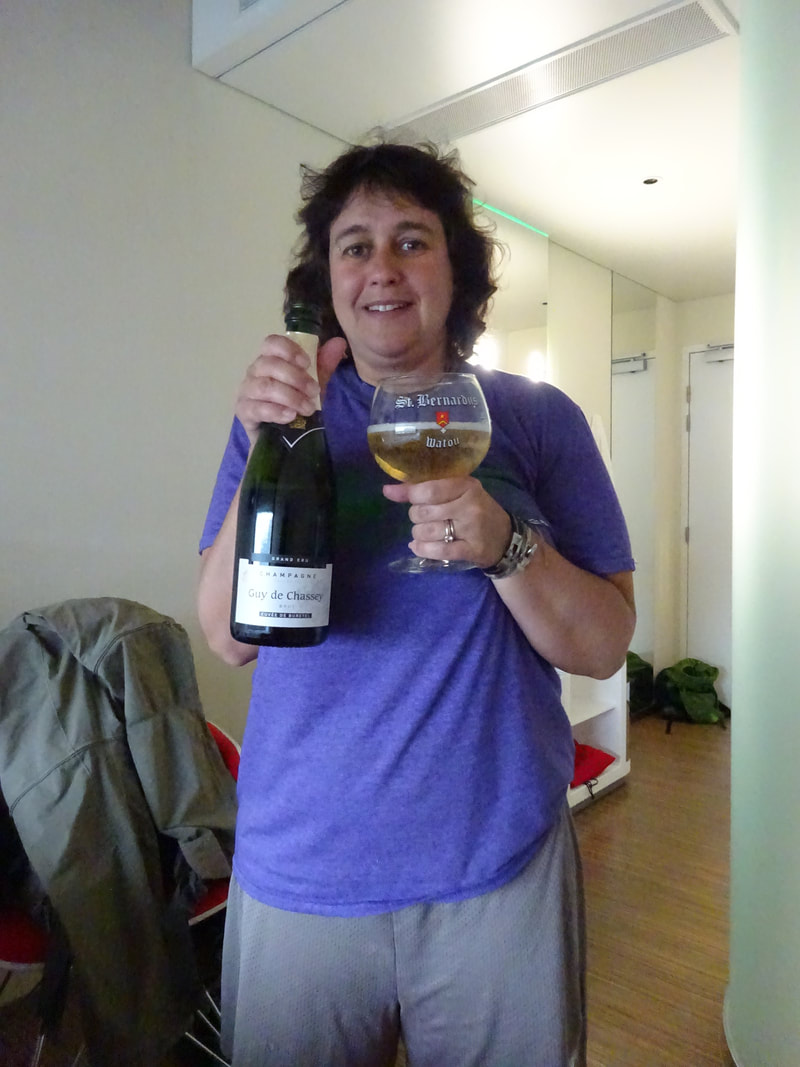



 RSS Feed
RSS Feed
